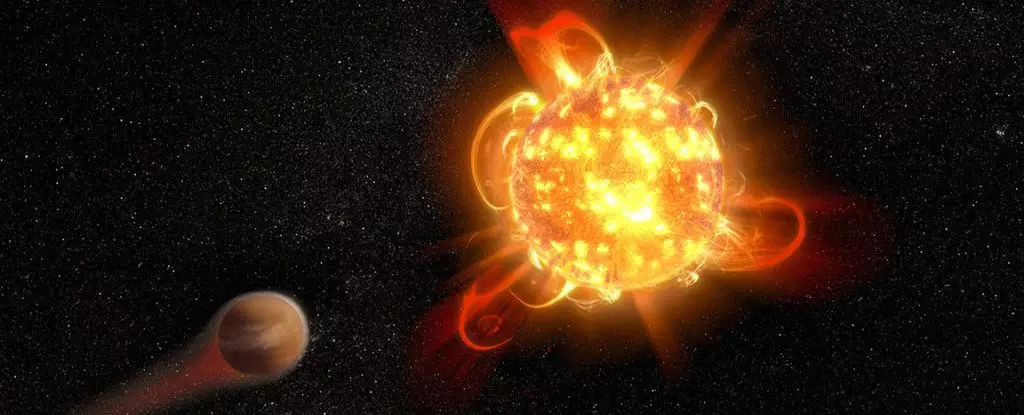Among the myriad stars that populate our universe, M-class stars, colloquially referred to as red dwarfs, are the most abundant. These stars make up about 70% of the total star population in the Milky Way. Characterized by lower mass and surface temperatures when compared to our Sun, red dwarfs boast lifespans that are remarkably lengthy, often stretching into billions of years. Their modest size and cooler temperatures suggest that they wield a rather benign presence in the cosmos. However, this appearance can be deceiving.
The habitability of planets orbiting these stars has been a topic of great interest among astronomers and astrobiologists. The ideal conditions for life as we know it might be present in these systems, especially considering that rocky planets are often found within the habitable zones of red dwarfs. The promise of a life-supporting environment should not blind researchers to the underlying hazards these systems pose.
Despite their benign appearances, red dwarfs are notorious for their vigorous stellar activity, particularly in the form of frequent and intense stellar flares. Recent research highlights a critical issue regarding these flares and their potential impact on planetary atmospheres. While previous studies have largely centered around the optical emissions of stellar flares, a recent paper has redefined the focus, examining ultraviolet (UV) radiation both in the near and far UV domains. This shift in perspective reveals a complex relationship between these flares and planetary habitability that was previously underestimated.
The findings indicate that the UV radiation emitted from these stellar flares can potentially have devastating effects on planets within their orbits. While low doses of UV radiation may assist the formation of complex organic molecules—considered precursors to life—high doses can be catastrophic. The balance between aiding and hindering life’s potential development lies in the radiation’s intensity. Excessive high-energy photons could strip away a planet’s atmosphere or deplete protective layers, such as ozone, ultimately rendering these worlds inhospitable.
The new research sheds light on a significant flaw in previous models concerning the nature of UV emissions associated with stellar activity. Traditionally, the radiation from flares has been derived from blackbody radiation models, presuming a temperature of around 8,727 degrees Celsius. These models suggested a consistent and predictable distribution of electromagnetic radiation. However, the recent analysis of 182 stellar flare events from M-class systems reveals a striking discrepancy. An overwhelming 98% of the observed flares emitted UV radiation that surpassed expectations based on the conventional blackbody spectrum.
This deviation indicates that classifying stellar emissions using such assumptions is insufficient for adequately representing the complexity of the phenomena. Given this finding, we are compelled to reconsider the implications for habitability on planets within red dwarf systems. The enhanced UV radiation output calls into question the viability of these planets for supporting life, even when they fall within otherwise permissible habitability conditions.
The emergence of these findings places a significant restriction on our understanding of astrobiology within the context of red dwarf stars. While the allure of finding habitable planets in these systems remains vibrant, it is increasingly clear that the nature of stellar activity raises potential risks that cannot be ignored. The complexity of stellar emissions, especially in terms of their UV contributions, might lead to environments where habitability is more precarious than initially thought.
As researchers continue to explore the cosmos for signs of life beyond Earth, it becomes imperative that we refine our models and understanding of the conditions surrounding these celestial bodies. The intricate relationship between stellar activity and planetary conditions necessitates a reevaluation of our existing paradigms in the search for extraterrestrial life. In essence, while red dwarfs hold the promise of planets with life-supporting characteristics, the reality of their environmental challenges paints a more cautionary narrative.
Red dwarfs, despite their mass accessibility and longevity, may not offer the stable homes we once believed them to be. As delineated by the latest research, the risks posed by their volatile nature compel us to tread carefully in our exploration of potential life across the universe.

